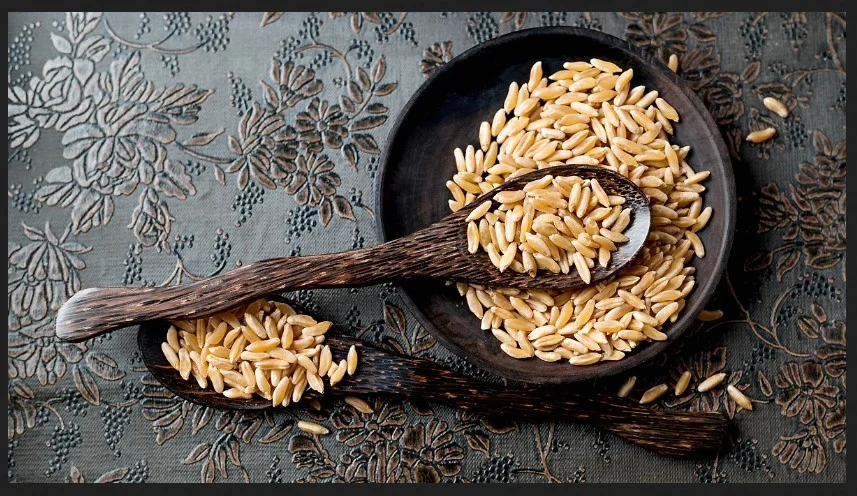In the world of nutrition and wellness, ancient grain in a healthy cereal nyt have emerged as a powerful trend, celebrated not only for their rich history but also for their numerous health benefits. These grains, which have been cultivated for thousands of years, are now being rediscovered and incorporated into modern diets, especially in the form of healthy cereals. As consumers become more health-conscious and seek nutrient-dense food options, ancient grains have taken center stage, offering a nutritious alternative to the more commonly consumed refined grains.
What Are Ancient Grains?
Ancient grains refer to a group of grains and pseudocereals that have remained largely unchanged for millennia. Unlike modern grains, which have been selectively bred for higher yields, ancient grains have retained their original genetic makeup. This category includes grains like quinoa, amaranth, spelt, millet, and teff, among others. Each of these grains has a unique nutritional profile, offering a variety of vitamins, minerals, and fiber that contribute to overall health.
A Brief History of Ancient Grains
The history of ancient grains is deeply intertwined with the development of human civilization. These grains were staples in the diets of early agricultural societies, providing the foundation for some of the world’s earliest cuisines. For instance, quinoa was a sacred crop to the Inca civilization, while amaranth was highly valued by the Aztecs. Spelt, a type of ancient wheat, was a common grain in Europe during the Bronze Age. These grains not only nourished ancient populations but also played significant roles in their cultural and religious practices.
The Rise of Ancient Grains in Modern Diets
As the modern world becomes increasingly aware of the health implications of diet, there has been a growing interest in traditional, whole foods. Ancient grains, with their rich nutritional profiles and historical significance, have become popular among those looking to return to more natural and unprocessed food sources.
Why Ancient Grains Are Making a Comeback
The resurgence of ancient grains can be attributed to several factors. First, there is a growing recognition of the benefits of whole grains over refined grains, which have been stripped of their nutrient-rich bran and germ. Whole grains, including ancient grains, are packed with fiber, vitamins, and minerals, making them an excellent choice for those looking to improve their diet.
Additionally, the rise of gluten-free diets has brought attention to grains like quinoa and amaranth, which are naturally gluten-free. As people seek alternatives to wheat, these ancient grains offer a nutritious and flavorful option.
Ancient Grains vs. Modern Grains
While modern grains like wheat, corn, and rice dominate global agriculture, they have been selectively bred to increase yield, often at the expense of nutritional content. Ancient grains, on the other hand, have been preserved in their original form, maintaining their full spectrum of nutrients. This difference is particularly evident in the higher protein, fiber, and micronutrient content of many ancient grains compared to their modern counterparts.
Moreover, ancient grains often have a lower glycemic index, meaning they have a more moderate impact on blood sugar levels. This makes them a better choice for those managing diabetes or looking to maintain stable energy levels throughout the day.
Nutritional Powerhouses: The Benefits of Ancient Grains
The health benefits of ancient grains are numerous, making them a valuable addition to any diet. These grains are not only rich in essential nutrients but also offer specific health advantages that can support overall well-being.
High Fiber Content
One of the standout features of ancient grains is their high fiber content. Fiber is essential for digestive health, helping to prevent constipation and promoting regular bowel movements. It also plays a key role in maintaining a healthy weight, as it increases satiety and reduces the likelihood of overeating. Grains like spelt and quinoa are particularly high in dietary fiber, making them excellent choices for those looking to boost their fiber intake.
Rich in Vitamins and Minerals
Ancient grains are also a great source of essential vitamins and minerals. For example, quinoa is rich in magnesium, a mineral that is crucial for nerve function, muscle contraction, and bone health. Amaranth is high in calcium, which is important for maintaining strong bones and teeth. Many ancient grains also contain significant amounts of B vitamins, which support energy production and brain function.
Gluten-Free Varieties
For individuals with celiac disease or gluten sensitivity, finding nutritious gluten-free options can be a challenge. Fortunately, many ancient grains, such as quinoa, amaranth, and millet, are naturally gluten-free. These grains provide a nutritious alternative to gluten-containing grains like wheat, barley, and rye, allowing those with gluten intolerance to enjoy a varied and balanced diet.
Sustainable Agriculture and Ancient Grains
In addition to their nutritional benefits, ancient grains are often grown using sustainable agricultural practices. Because these grains have not been bred for high yields, they are typically more resilient to pests and diseases, reducing the need for chemical inputs. Additionally, many ancient grains are well-suited to growing in marginal environments, making them an important crop for preserving biodiversity and promoting food security in regions prone to climate change.
Popular Ancient Grains in Healthy Cereals
Ancient grains have become increasingly popular in the world of healthy cereals. These grains not only add unique flavors and textures to cereals but also boost their nutritional content, making them a smart choice for a nutritious breakfast.
Quinoa: The Protein Powerhouse
Quinoa is perhaps the most well-known ancient grain, and for good reason. This small, round grain is packed with protein, containing all nine essential amino acids that the body cannot produce on its own. This makes quinoa a complete protein, a rarity among plant-based foods. In addition to protein, quinoa is also high in fiber, magnesium, and iron, making it a nutrient-dense addition to any cereal.
Amaranth: The Tiny Giant of Nutrition
Amaranth is another ancient grain that has gained popularity for its impressive nutritional profile. This tiny grain is particularly high in calcium, which is essential for bone health. It also contains a good amount of protein and fiber, making it a filling and nutritious option for breakfast cereals. Amaranth has a slightly nutty flavor, which pairs well with a variety of other grains and ingredients.
Spelt: The Ancient Wheat Alternative
Spelt is an ancient variety of wheat that has been cultivated for thousands of years. It has a slightly sweet, nutty flavor and a chewy texture, making it a popular choice for cereals. Spelt is higher in protein and fiber than modern wheat, and it also contains a range of vitamins and minerals, including iron, magnesium, and zinc. For those looking for a wheat alternative that is easier to digest, spelt is an excellent option.
Millet: The Forgotten Grain
Millet is a small, round grain that has been a staple in many traditional diets around the world. Despite its long history, millet has been largely forgotten in modern times. However, it is now making a comeback as a nutritious and versatile grain. Millet is rich in magnesium, phosphorus, and iron, and it is also gluten-free, making it suitable for those with gluten sensitivities. Its mild, slightly sweet flavor makes it a great addition to cereals and other breakfast dishes.
Teff: The Ethiopian Supergrain
Teff is a tiny grain that is a staple in Ethiopian cuisine, where it is used to make injera, a traditional flatbread. It is also a good source of calcium and resistant starch, which can help regulate blood sugar levels. Teff’s slightly earthy flavor and fine texture make it a unique and nutritious addition to cereals.
How to Incorporate Ancient Grains into Your Diet
Incorporating ancient grains into your diet is easier than you might think. Whether you’re looking for a quick breakfast or a more elaborate meal, ancient grains can add both nutrition and flavor to your dishes.
Start Your Day with Ancient Grain Cereals
One of the simplest ways to enjoy ancient grains is by starting your day with a bowl of ancient grain cereal. Many brands now offer cereals made with a variety of ancient grains, providing a convenient and nutritious breakfast option. Look for cereals that include a mix of grains like quinoa, amaranth, and millet to get a range of nutrients.
Ancient Grain Recipes for Breakfast
If you prefer to make your own breakfast dishes, there are plenty of ways to incorporate ancient grains into your morning routine. For example, you can cook quinoa or amaranth in milk or water to make a warm porridge, similar to oatmeal. Add your favorite fruits, nuts, and spices for a delicious and filling breakfast. You can also use ancient grains in homemade granola, mixing them with oats, seeds, and honey before baking.
The Role of Ancient Grains in a Balanced Diet
Ancient grains can play a key role in a balanced diet, providing essential nutrients and helping to support overall health. When combined with other nutrient-dense foods, ancient grains can contribute to a diet that is both satisfying and nutritionally complete.
Combining Ancient Grains with Other Nutrient-Dense Foods
To get the most out of ancient grains, try combining them with other nutrient-dense foods. For example, you can top a bowl of quinoa with fresh berries and a sprinkle of nuts for a breakfast that is high in protein, fiber, and antioxidants. Or, add cooked spelt to a salad with leafy greens, roasted vegetables, and a healthy fat like avocado or olive oil for a balanced and satisfying meal.
Ancient Grains and Weight Management
Ancient grains can also be beneficial for those looking to manage their weight. The high fiber content of these grains helps to increase feelings of fullness, reducing the likelihood of overeating. Additionally, the complex carbohydrates found in ancient grains are digested more slowly than simple carbohydrates, leading to more stable blood sugar levels and sustained energy throughout the day.
Ancient Grain Cereals: A Healthy Choice
Choosing cereals made with ancient grains is a smart choice for those looking to improve their diet. These cereals offer a range of health benefits and are a nutritious alternative to conventional cereals.
Why Choose Ancient Grain Cereals?
Ancient grain cereals are typically higher in fiber, protein, and essential nutrients than cereals made with refined grains. This makes them a more filling and nutritious option for breakfast. Additionally, many ancient grain cereals are made with whole grains, which have been shown to reduce the risk of chronic diseases like heart disease, diabetes, and certain cancers.
Comparing Ancient Grain Cereals to Conventional Cereals
When compared to conventional cereals, ancient grain cereals often come out on top in terms of nutrition. While many conventional cereals are made with refined grains and contain added sugars, ancient grain cereals are typically made with whole grains and have little or no added sugars. This makes them a healthier choice for those looking to start their day with a nutritious meal.
The Best Ancient Grain Cereals on the Market
If you’re looking to try ancient grain cereals, there are plenty of great options on the market. Here are some of the top brands to consider, along with tips on what to look for when choosing a cereal.
Top Brands Featuring Ancient Grains
Some of the best-known brands offering ancient grain cereals include Bob’s Red Mill, Nature’s Path, and Kashi. These brands offer a variety of cereals made with different ancient grains, allowing you to choose the one that best suits your taste and nutritional needs.
What to Look for When Buying Ancient Grain Cereals
When shopping for ancient grain cereals, there are a few things to keep in mind. First, look for cereals that are made with whole grains, as these will offer the most nutritional benefits. Additionally, check the ingredient list for added sugars and avoid cereals that contain high amounts of sweeteners. Finally, consider the fiber and protein content of the cereal, as these nutrients will help keep you full and satisfied.
Conclusion
The future of ancient grains in healthy eating looks promising as more people recognize their nutritional benefits and cultural significance. By embracing ancient grains, we can enjoy a healthier lifestyle while also supporting sustainable agriculture practices. Whether in cereals, breads, or other dishes, ancient grains offer a delicious and nutritious way to enrich our diets.
FAQs about Ancient Grain Cereal
Are ancient grain cereals good for you?
Yes, ancient grain cereals are highly nutritious and provide a good source of fiber, protein, and essential vitamins and minerals. They are a healthier alternative to cereals made with refined grains.
Are ancient grain cereals gluten-free?
Some ancient grain cereals are gluten-free, depending on the grains used. Quinoa, amaranth, and millet are naturally gluten-free, while spelt contains gluten.
How do ancient grains compare to modern grains nutritionally?
Ancient grains are often higher in protein, fiber, and micronutrients compared to modern grains. They also tend to have a lower glycemic index, making them a better choice for blood sugar management.
What is the best way to store ancient grains?
Ancient grains should be stored in an airtight container in a cool, dry place. For long-term storage, you can also keep them in the refrigerator or freezer to extend their shelf life.
Can children eat ancient grain cereals?
Yes, children can eat ancient grain cereals. These cereals are a nutritious option for breakfast and can provide important nutrients for growing bodies.
Do ancient grains have a higher environmental impact?
Ancient grains are often more environmentally sustainable than modern grains, as they require fewer chemical inputs and can be grown in a wider range of environments. This makes them a good choice for those looking to reduce their environmental impact.





